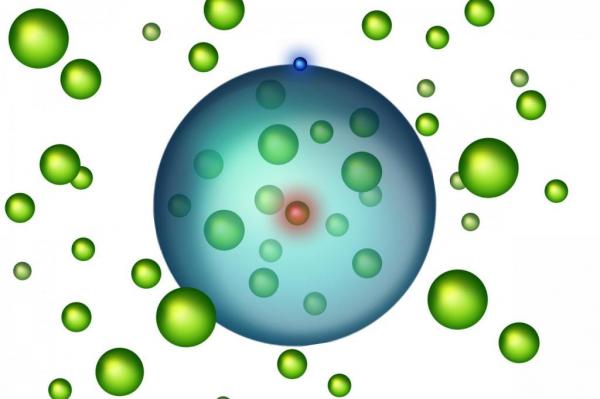“Normally, we are dealing with charged nuclei, binding electrons around them,” researcher Shuhei Yoshida said. “Here, we have an electron, binding neutral atoms.”
Scientists have discovered an atom filled with atoms. The atom’s electrons orbit at such a great distance that there’s room for other atoms.
The atoms within the “giant atom” form weak bonds, producing a new exotic state of matter — what scientists have dubbed “Rydberg polarons.”
The discovery combines a pair of atomic phenomenon, both of which can only be studied under extremely cold conditions: Bose-Einstein condensates and Rydberg atoms.
A Bose-Einstein condensate is a unique state of matter observed only at temperatures approaching absolute zero. Rydberg atoms are atoms featuring a single electron in a distant orbit and a highly excited state.
“The average distance between the electron and its nucleus can be as large as several hundred nanometers — that is more than a thousand times the radius of a hydrogen atom,” Joachim Burgdörfer, a professor at the Vienna University of Technology in Austria, said in a news release.
As part of the latest experimentation — carried out with the help of scientists at Rice University in Houston — researchers created a Bose-Einstein condensate using strontium atoms. Scientists converted one of the condensate’s atoms into a Rydberg atom using a laser.
The orbital radius of the atom’s newly excited electron became much wider than the distance between the condensate’s two atoms. As a result, the electron came to orbit, not only its original atomic nucleus, but multiple Bose-Einstein condensate atoms.
“The atoms do not carry any electric charge, therefore they only exert a minimal force on the electron,” said researcher Shuhei Yoshida.
That minimal force is enough, however, to diminish the total energy of the giant atom and cause weak atomic bonds to form within the unusual atomic system.
“It is a highly unusual situation,” said Yoshida. “Normally, we are dealing with charged nuclei, binding electrons around them. Here, we have an electron, binding neutral atoms.”
Scientists described the newly named Rydberg polarons in the journal Physical Review Letters.












